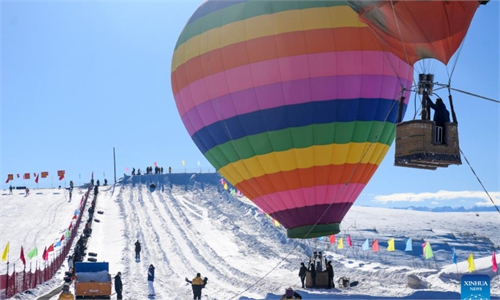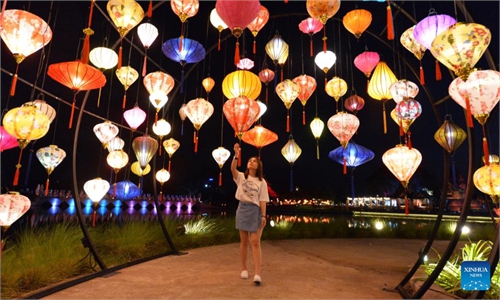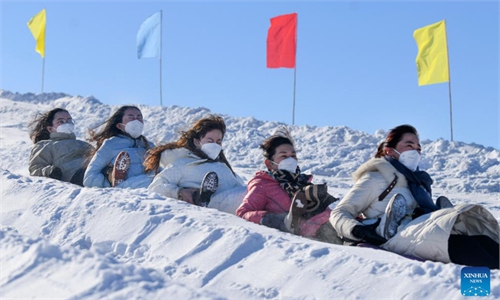ARTS / CULTURE & LEISURE
The secrets behind two Chinese villages’ inscription as world’s Best Tourism Villages
Enchanted countryside
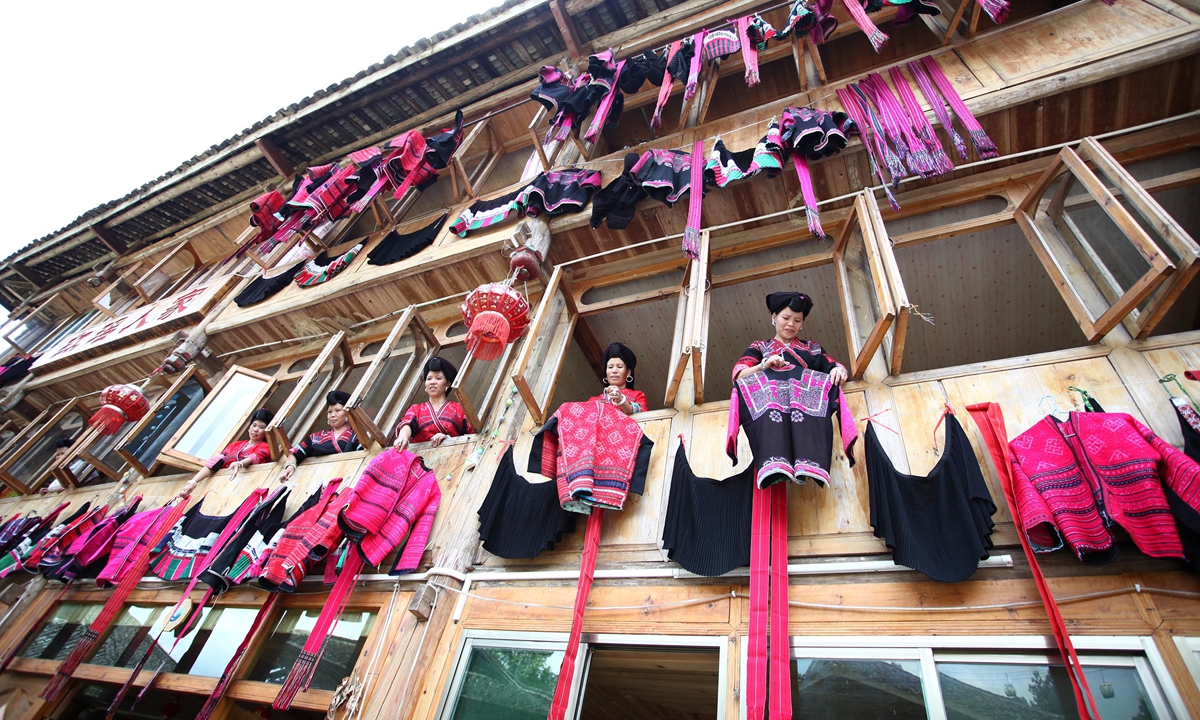
Red Yao women in Dazhai village dry their clothes in the sun. File photo: VCG
Dazhai village in South China's Guangxi Zhuang Autonomous Region and Jingzhu village in Southwest China's Chongqing Municipality have been named as Best Tourism Villages of 2022 by the World Tourism Organization (UNWTO). How the two stand out from the 136 villages in the world? Their accredited cultural and natural assets as well as the values of innovation and sustainability are the answers.In 2018, the Longsheng Rice Terraces in Dazhai village were selected as the "Global Important Agricultural Cultural Heritage" by the Food and Agriculture Organization of the United Nations. Dazhai is located in the core area of the scenic area with the height between 800 and 1,100 meters. The village makes full use of the local farming terraces, traditional architectures and dwellings and enchanting natural scenery to develop terrace landscape tourism, presenting a grand and spectacular terraced field landscape.
The Longsheng Rice Terraces were first built in the Yuan Dynasty (1279-1368) and have a history of more than 650 years. The terraced fields cover an area of 66 square kilometers. Planted with crops, the terraced fields formed a beautiful picture scroll with the surrounding mountains and rivers.
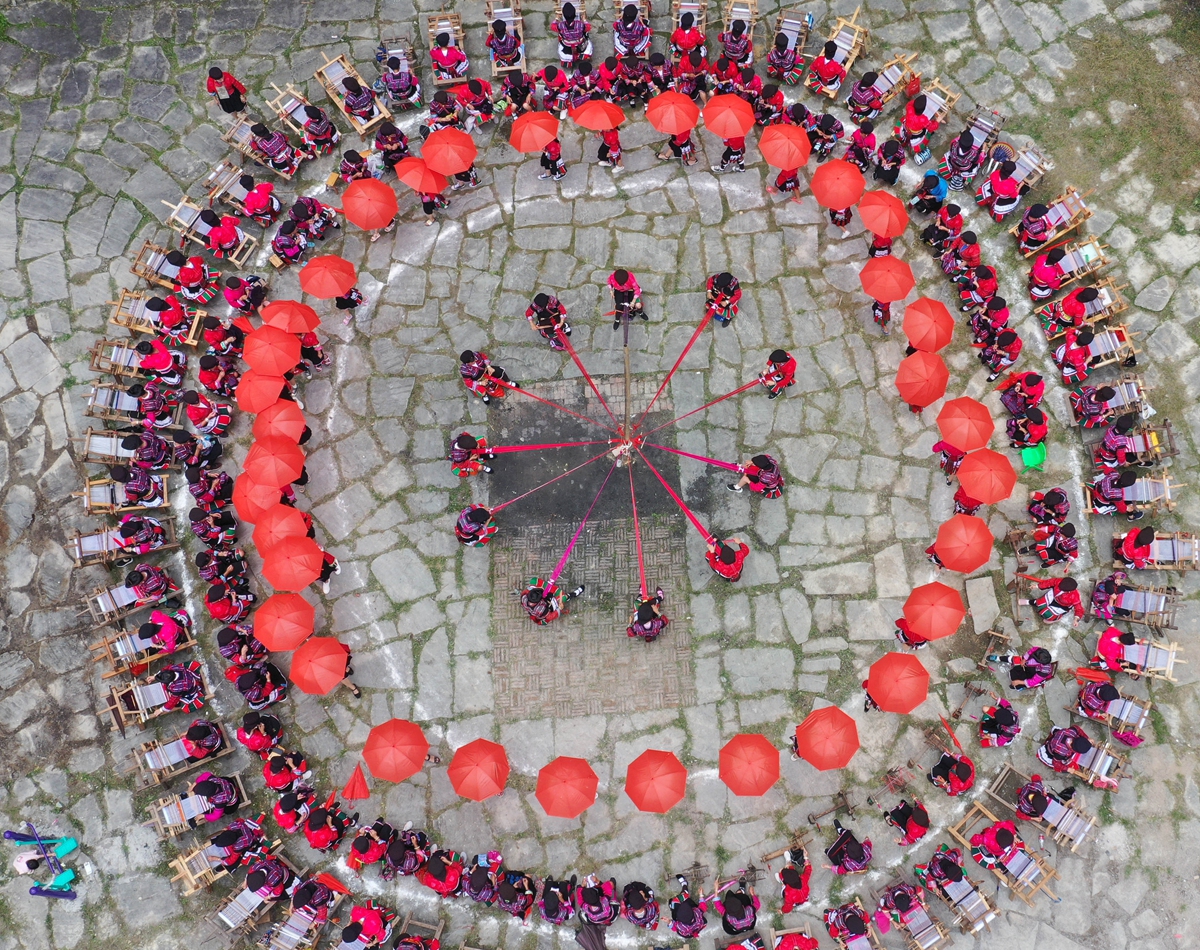
Red Yao women in Dazhai village demonstrate the craftsmanship of traditional Red Yao clothing. File photo: VCG
As a branch of the Yao ethnic minority group, the women of Red Yao are well known for their red-colored clothes representing good fortune as well as their tradition of leaving long hair without cutting since they were born. The women have secret recipes for hair care - to wash their hair by using weeds picked from the mountains mixed with the rice-washing water - that have been passed down from generation to generation, making the village earned the title of "long hair village."Dazhai village has transformed the traditional culture of Red Yao into a tourism industry through activities such as displaying red clothes, the local women's long hair, splendid weaving skills, holding collective weddings, and celebrating the Torch Festival, offering visitors an immersive experience of the traditional Red Yao culture.
The profound Red Yao culture and the magnificent terraced fields demonstrate the Chinese people's wisdom in adapting to local conditions and the unity of man and nature.
While developing tourism, Dazhai village has adhered to the fundamentals of agricultural production, strictly abiding by the production seasons such as paddy field cultivation and harvesting, strengthens the protection of terraced fields, and ensures the sustainable development of agricultural production and tourism development.
The villagers cultivate their own terraces in a unified manner according to the requirements of the core scenic spots, and regularly repair and strengthen the ridges. Local tourism companies need to reward 5,000 yuan ($ 717) to each mu (667 square meters) of the terraced fields.
Following the development of tourism, the lives of villagers have experienced earth-shaking change. More than 230 villagers have opened homestay and farmhouses. Yu Qiongtong, head of Dazhai village, said that the per capita income of Dazhai village was less than 700 yuan before developing tourism industry, but the per capita annual income has reached 34,000 yuan in 2019.
Data shows that Dazhai village received more than 600,000 tourists and achieved tourism revenue of 528 million yuan in 2021, the China News reported.
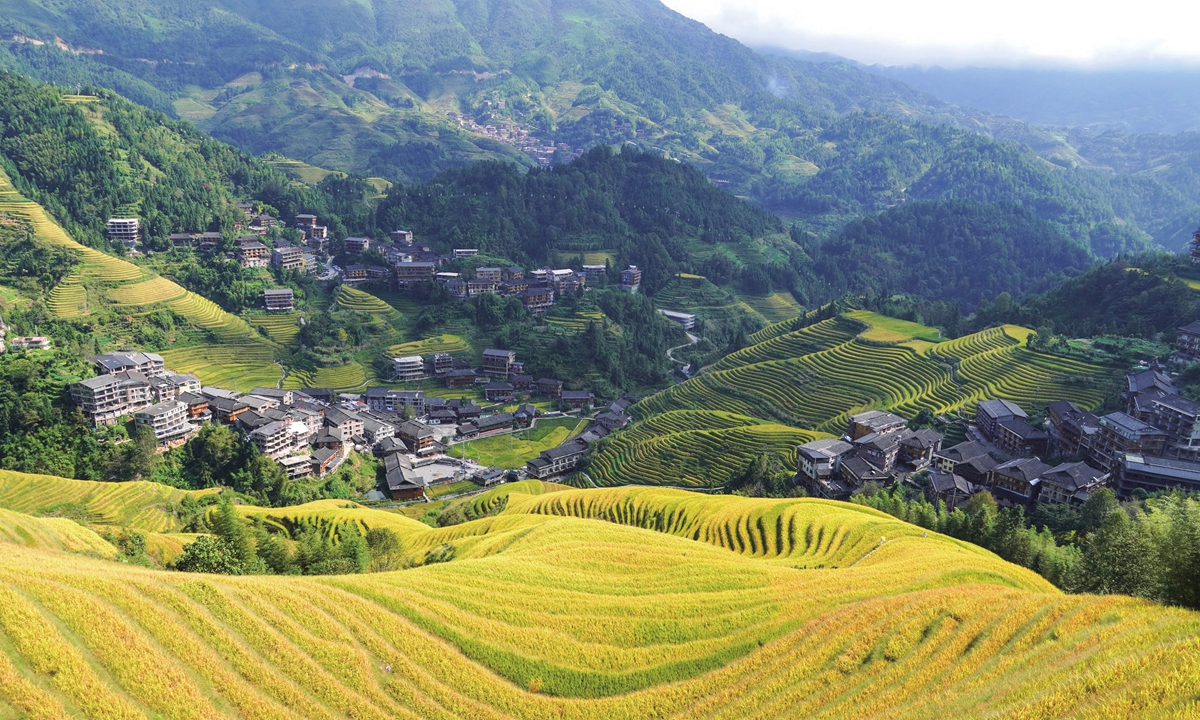
A view of Dazhai village in the Guangxi Zhuang Autonomous Region File photo: VCG
Reviving the vitalityPreviously, Yucun and Xidi, villages respectively in East China's Zhejiang and Anhui provinces, had been recognized among the Best Tourism Villages by the UNWTO, where the two new spots added the total number to four.
In recent years in order to revive the vitality of the rural areas in China, various efforts have been put in place to boost the economy, protect the environment, and improve the infrastructure, where the countryside tourism also plays an important part to development.
Villages across the country have taken their own advantages to combine the inheritance of local culture with the modern civilization, endowing it with a new connotation of the times, and showing the world the living Chinese culture.
In Jingzhu, Chongqing, the local villagers came up with ideas to revitalize tradition in modern ways. On the one hand, they chose to retain the lifestyle and architectural features rooted in such a unique geographical and cultural environment.
Jingzhu is located in Fairy Mountain in Wulong, where the beautiful natural resources are well preserved.
Its distinctive changing scenery in four seasons, forests, grasslands, canyons and cliffs landforms have been appreciated by many tourists as a perfect place to holiday.
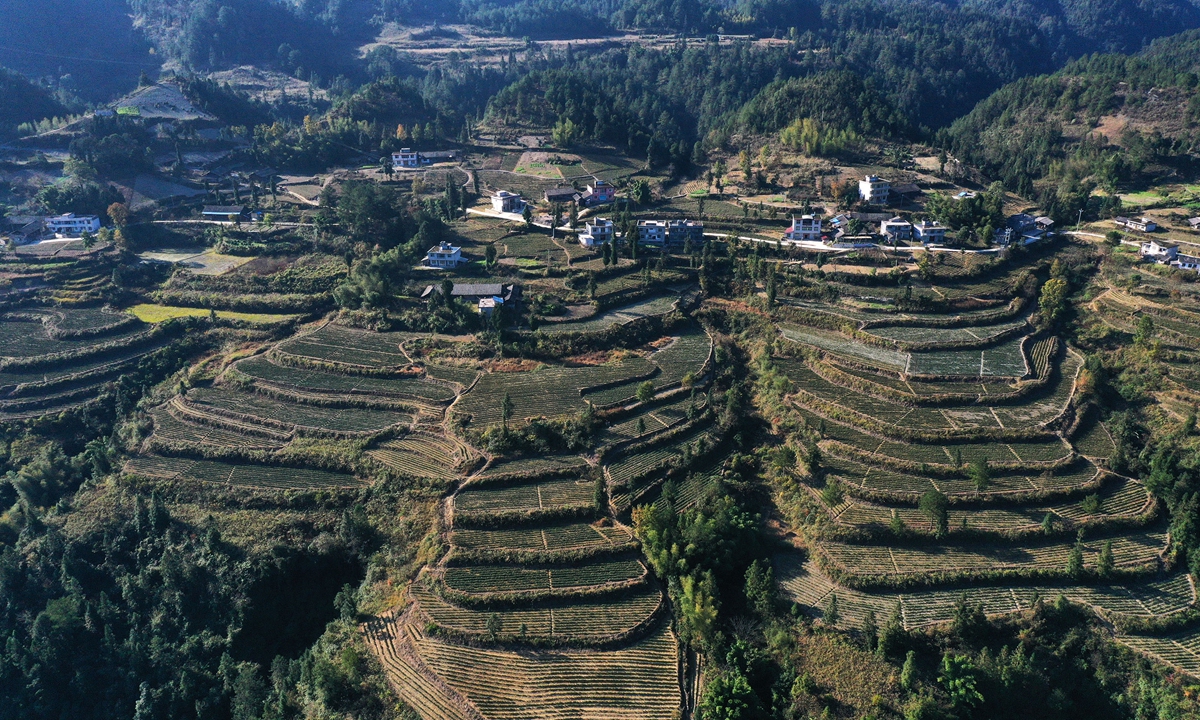
A view of Jingzhu village in the Chongqing Municipality File photo: VCG
On the other hand, the local villagers introduced modernity to recreate the public cultural spaces, decorated and designed with wood to echo traditions.To inherit the intangible culture, Jingzhu built a public space to store and present all the traditional cultures that belong to the village from bamboo weaving, paper cutting and traditional food production, where visitors from all over the world can witness and experience the charm of an ancient village.
To attract more young blood, the village opened integrated public cultural space where exhibition halls, libraries and salons were built. As the data obtained from the Ministry of Culture and Tourism shows, 312 jobs were created thanks to the tourism development inside the small village.
In addition, the village also organized the international summer camp activities to guide young people to learn farming culture through experiences. The very ancient commercial road stations were also repaired and protected to recreate the scenes thousands of years ago.
To protect the environment, Jingzhu follows the concept of green development where in April every year, activities such as lectures related to water conservation and waste classification will be held within the village to update the ideas of climate change and resources pollution.
In addition, Jingzhu village has stepped up in control of soil erosion, and set up artificial bird nests in forests to attract birds to inhabit.

